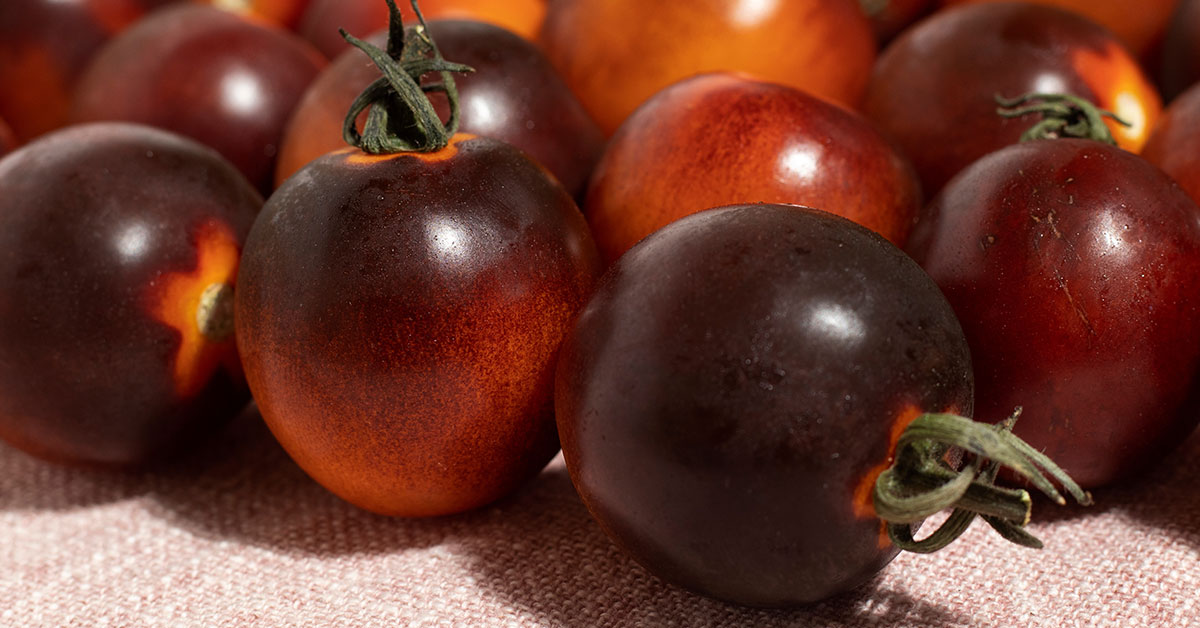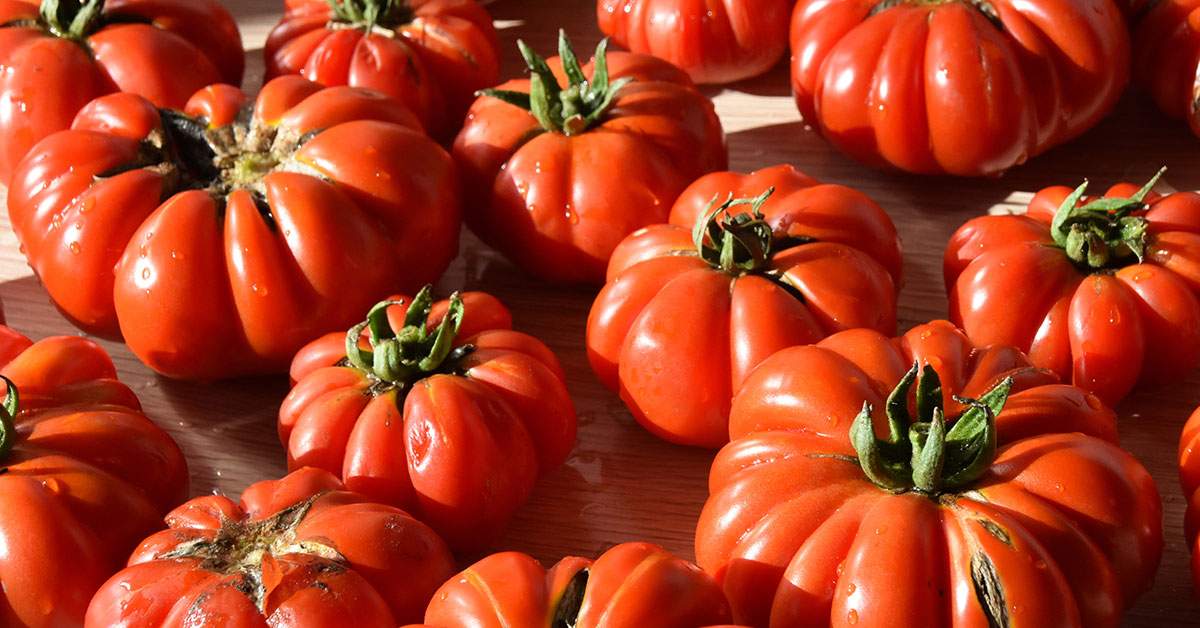If you love fresh, juicy fruits that burst with flavor, you’re going to fall head over heels for the strawberry tomato. This unique fruit is a hybrid of two popular fruits, the strawberry and the tomato, and it offers a sweet and tangy taste that is truly irresistible. Whether you’re looking for a new snack to add to your repertoire or you’re interested in trying your hand at incorporating this delicious fruit into your favorite recipes, the strawberry tomato is a must-try. In this blog post, we’ll take a closer look at this fascinating fruit and explore all the ways you can enjoy it.
What is a Strawberry tomato?
Strawberry tomato, also known as “Fragola” or “Red Currant Tomato,” is a type of tomato that is small in size, sweet, and shaped like a strawberry. It is a unique variety of cherry tomato that has become popular among gardeners and food enthusiasts alike. Despite its name, the Strawberry tomato is not a crossbreed between a strawberry and a tomato. Instead, it is the result of natural selection and breeding.
Strawberry tomatoes are typically reddish-pink in color, and they grow in clusters on the vine. They are about the size of a grape or a cherry, with a sweet and slightly tangy flavor that makes them perfect for salads, snacking, and garnishes. They are also ideal for making jams, jellies, and sauces.
One of the unique aspects of the Strawberry tomato is its high nutritional value. Like most tomatoes, they are low in calories and rich in vitamins A, C, and K. They are also packed with antioxidants, which help to fight off free radicals and reduce the risk of chronic diseases.
Overall, the Strawberry tomato is a delicious and nutritious addition to any diet. Whether you’re a fan of gardening or just looking for a tasty new ingredient to add to your recipes, this small but mighty tomato is definitely worth a try.
How to start Strawberry tomato seeds
Starting tomatoes from seed is a cost-effective and rewarding way to grow your own tomato plants. To begin, choose the tomato varieties that suit your preferences and growing conditions.
Fill seed trays or pots with a lightweight and well-draining seed starting mix, plant the seeds at the recommended depth, and provide adequate moisture and warmth for germination.
Once the seedlings have developed their second set of true leaves, they can be transplanted into larger containers or individual pots. Gradually acclimate the seedlings to outdoor conditions before transplanting them into the garden.
By following these basic steps, you can successfully start tomatoes from seed and enjoy a thriving crop of homegrown tomatoes.
Additional Resource: Our comprehensive guide to starting tomatoes from seed
Growing & care
Transplanting and caring for tomatoes outdoors involves a few essential steps. First, choose a sunny location with well-drained soil. Prior to transplanting, harden off the seedlings by gradually exposing them to outdoor conditions.
Dig a hole slightly larger than the root ball of each seedling and plant them, burying the stem up to the first set of leaves. Water the seedlings thoroughly after transplanting. Provide consistent watering, aiming for 1-2 inches of water per week.
Stake or cage the plants for support and prune indeterminate varieties by removing suckers. Monitor for pests and diseases, taking prompt action if necessary. By following these steps, you’ll set your tomato plants up for healthy growth and a fruitful harvest.
Additional Resource: How to transplant and care for tomatoes outdoors
Common tomato pests and diseases
Tomatoes are susceptible to various pests and diseases that can affect their health and productivity. Some common tomato pests include aphids, tomato hornworms, whiteflies, and cutworms. These pests can cause damage to leaves, stems, and fruit, leading to reduced plant vigor and yield.
Additionally, tomato plants can be affected by diseases such as early blight, late blight, fusarium wilt, and verticillium wilt. These diseases can cause leaf discoloration, wilting, and fruit rot. Proper identification and timely intervention are crucial to effectively manage these pests and diseases and ensure the successful growth of tomato plants.
Additional Resource: Comprehensive list of tomato diseases and pests and how to fix them
Common problems
Strawberry tomato, also known as ground cherry, is a unique fruit that is quite easy to grow. However, like any other plant, it can be susceptible to certain problems that can hinder its growth and yield. Here are some common problems you might encounter when growing strawberry tomato and how to deal with them.
Poor Germination
One of the most common problems when growing strawberry tomato is poor germination. This can be caused by various factors such as poor soil quality, improper watering, or planting the seed too deep. To ensure better germination rates, make sure to use high-quality soil and water the seeds regularly.
Pests
Strawberry tomato plants can be susceptible to various pests such as aphids, whiteflies, and spider mites. These pests can cause damage to the fruit, leaves, and stems of the plant. To prevent pest infestations, keep your plants healthy by watering them regularly and keeping the soil moist. You can also use natural pest control methods such as spraying the plants with a mixture of water and dish soap.
Diseases
Strawberry tomato plants can also be susceptible to various diseases such as fungal infections and bacterial blight. These diseases can cause yellowing of the leaves, wilting of the plant, and fruit rot. To prevent diseases from spreading, make sure to keep your plants well-ventilated and avoid overcrowding. You can also use fungicides or bactericides to control the spread of the disease.
Lack of Pollination
Strawberry tomato plants require pollination to produce fruit. However, if the plant is not properly pollinated, it can result in poor fruit development and yield. To ensure proper pollination, you can hand-pollinate the flowers using a small brush or attract pollinators such as bees and butterflies to your garden.
While growing strawberry tomatoes can be a rewarding experience, it is important to be aware of the common problems that can arise. By taking preventive measures and addressing any issues promptly, you can ensure healthy and fruitful plants.
Uses for Strawberry tomatoes
Strawberry tomato, also known as “Garden Peach” or “Aurora,” is a unique variety of tomato that has a small, round shape and a bright orange color. It is called “strawberry” tomato due to its sweet and fruity flavor that resembles strawberries. But what are they typically used for?
- Snacking: Strawberry tomatoes are perfect for snacking. They are small and easy to pop in your mouth, making them a great healthy snack option. The sweetness of the strawberry tomato can satisfy your sweet tooth without the added sugar.
- Salads: These tomatoes are a great addition to salads. Their bright orange color adds a pop of color to any salad, and their sweet flavor can balance out the bitterness of greens. Plus, the small size of the strawberry tomato makes them easy to toss into a salad.
- Garnish: These little tomatoes are perfect as a garnish for cocktails, appetizers, or even main dishes. The unique shape and color can add a touch of elegance to any dish.
- Sauce: Strawberry tomatoes can be used to make a delicious tomato sauce. They are naturally sweet, which can help balance the acidity of the tomatoes. The sauce can be used for pasta dishes, pizza, or even as a dip.
- Preserving: Strawberry tomatoes can be preserved by pickling or canning. This can help extend their shelf life and allow you to enjoy their sweet flavor year-round.
In conclusion, strawberry tomatoes are a versatile and delicious addition to any dish. They can be used for snacking, salads, garnish, sauce, and preserving. So next time you come across these unique little tomatoes, give them a try!













